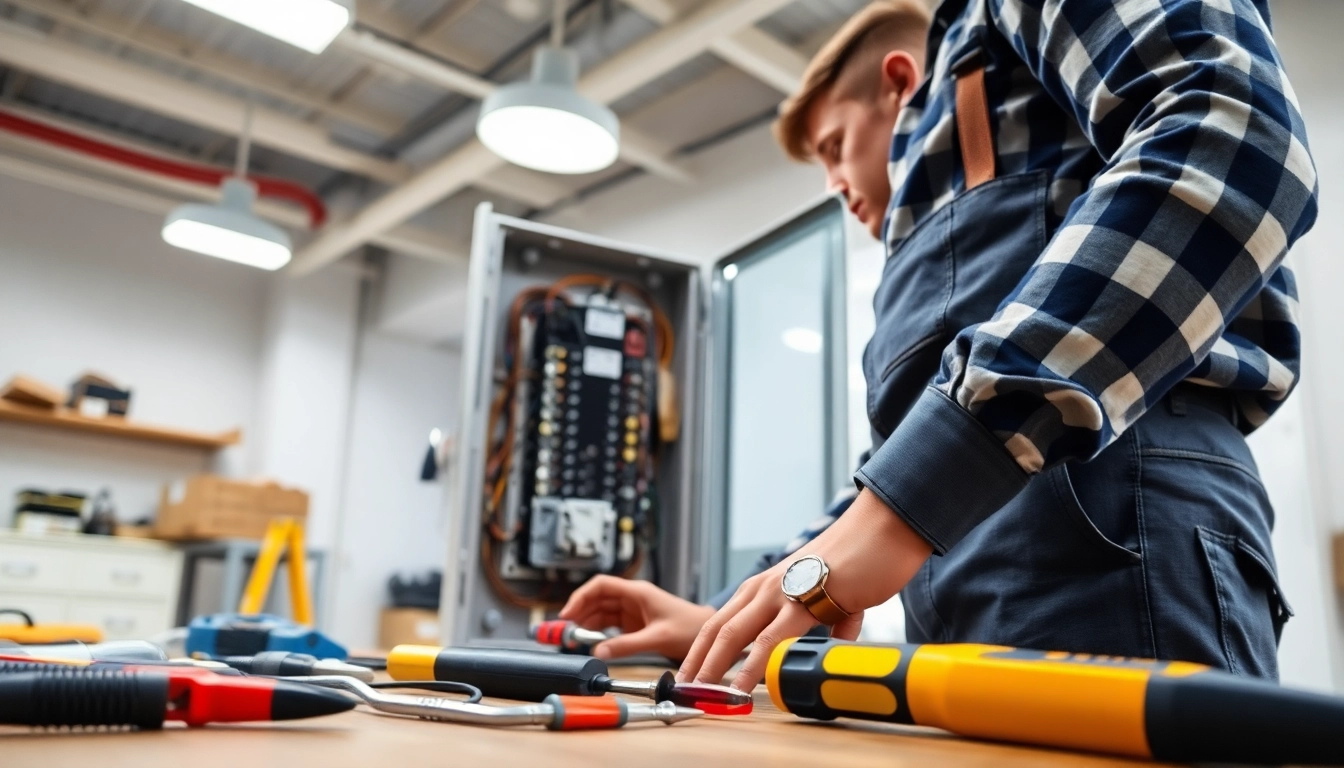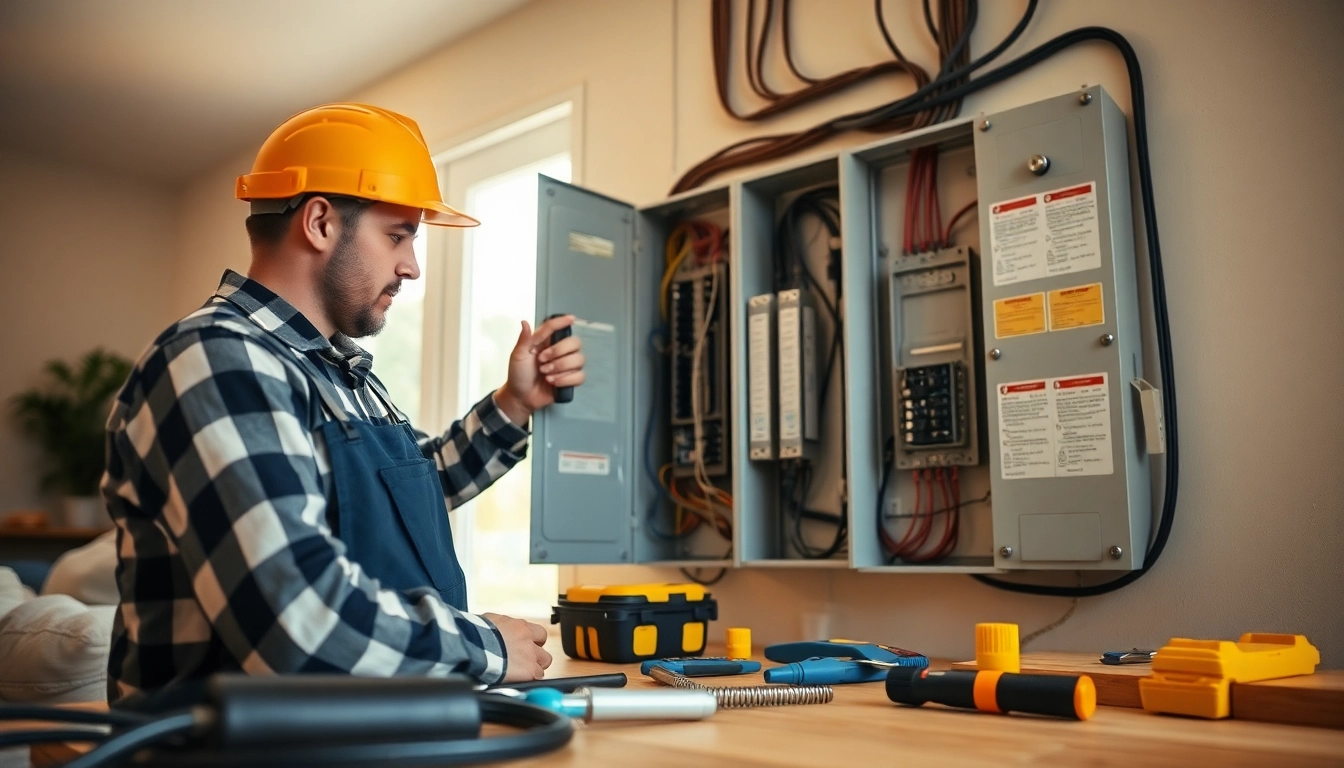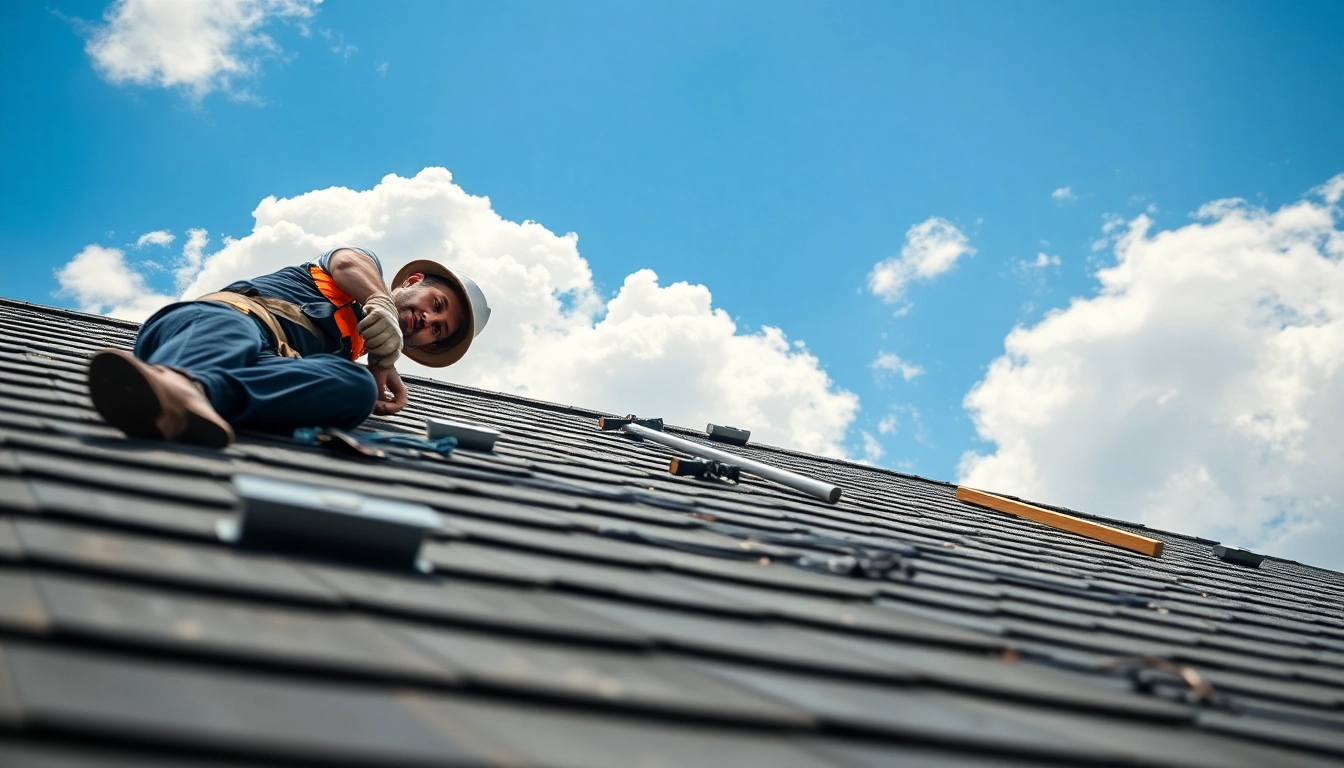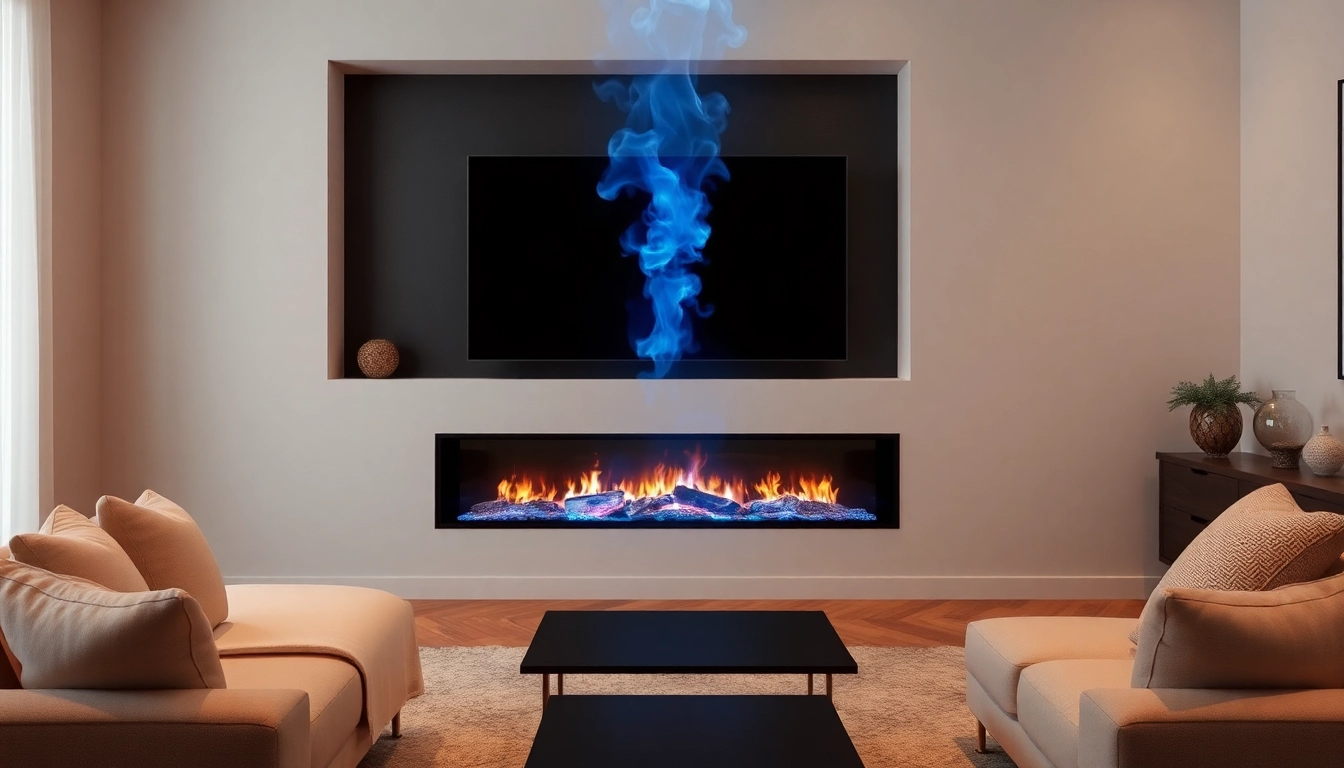Understanding Electrical Panel Upgrades
An electrical panel upgrade is a crucial aspect of maintaining and improving a home’s electrical system, especially as modern technology continues to evolve. As households increasingly adopt energy-consuming devices—from electric vehicles (EVs) to smart home systems—the demand for reliable and efficient power distribution grows. An electrical panel upgrade ensures that your home can accommodate these demands while also enhancing safety and efficiency. In this comprehensive guide, we will explore what an electrical panel upgrade entails, signs that indicate the need for an upgrade, the benefits it offers, and much more.
What is an Electrical Panel Upgrade?
An electrical panel, often referred to as a breaker box, is the central hub for your home’s electrical system. It distributes electricity to various circuits throughout the house and provides circuit protection through breakers. An electrical panel upgrade involves replacing or significantly modifying an existing panel to increase its capacity or improve its safety features. This upgrade can involve transitioning from a 100-amp service to a 200-amp service or installing a more modern panel style that meets current standards.
Key Indicators for Upgrade Needs
Determining when to upgrade your electrical panel can be pivotal for both safety and functionality. Here are several critical signs that could indicate a need for an upgrade:
- Your Home’s Age: Many homes built before the 1990s may still have outdated panels, which may not support modern electrical loads.
- Frequent Circuit Breaker Trips: If circuit breakers are regularly tripping, this may indicate an overload and the need for a larger panel.
- New Electrical Devices: Investment in new appliances or systems—like a home EV charger—often requires increased amperage.
- Renovations or Additions: Expanding your home or adding major appliances may exceed your panel’s capacity.
- Buzzing or Discoloration: Signs of physical wear, such as buzzing noises or burnt marks around the panel, indicate potential hazards.
Benefits of Upgrading Your Electrical Panel
Investing in an electrical panel upgrade can yield numerous benefits, including:
- Increased Capacity: Upsizing to a panel with higher amperage allows for more devices and appliances to be used without the risk of overloading.
- Enhanced Safety: Upgraded panels can better protect against electrical fires and hazards, thanks to modern circuit breakers and technology.
- Improved Energy Efficiency: Newer panels can help minimize energy loss, which can lead to lower electricity bills over time.
- Higher Home Value: Upgrading your electrical system is an attractive feature for prospective buyers and can add to your home’s resale value.
- Peace of Mind: Knowing that your electrical system is up-to-date and safe allows for a greater sense of comfort within your home.
Cost Analysis of Electrical Panel Upgrades
Average Costs: What to Expect
The cost to upgrade an electrical panel can vary significantly depending on several factors. Generally, homeowners can expect to pay anywhere from $800 to $4,000 for an electrical panel upgrade. This estimate includes the cost of materials and labor, with additional features or complexities potentially increasing the overall expense.
It’s worth mentioning that the average costs for labor can range from $50 to $120 per hour, while the panels themselves typically cost between $100 to $500. Understanding these aspects can provide clarity and help homeowners budget effectively for upgrades.
Factors Influencing Upgrade Costs
When planning an electrical panel upgrade, several factors come into play that can influence the total cost:
- Type of Panel: The choice between a basic panel and premium models with advanced safety features can impact costs.
- Location: Labor costs may vary based on geographical location; urban areas often experience higher rates.
- Permitting Fees: Depending on local regulations, obtaining permits may add to the overall price.
- Existing System’s Condition: If any existing wiring needs to be updated or repaired, this can add to the project’s complexity and cost.
- Additional Electrical Work: Upgrades may necessitate additional work, including wiring modifications or new circuit installations.
Potential Savings and Incentives
While the costs associated with an electrical panel upgrade may seem daunting, there are potential savings and incentives available:
- Tax Credits: Homeowners might qualify for tax credits when upgrading to energy-efficient electrical systems, which can offset costs considerably.
- Energy Rebates: Various utility companies offer rebates for upgrading to energy-efficient equipment, which can provide further financial relief.
- Long-term Savings: Enhanced energy efficiency through an upgraded panel can lead to lower monthly electricity bills, yielding savings over time.
DIY vs. Professional Electrical Panel Upgrades
When to DIY vs. Hire an Electrician
Deciding whether to undertake an electrical panel upgrade as a DIY project or hire a professional electrician depends on several factors, including:
- Your Skill Level: Experience in electrical work is essential. If unsure, hiring a pro is safer.
- Local Codes and Permits: Many areas require licensed electricians for panel upgrades due to safety regulations and codes.
- Safety Considerations: Electrical work involves significant risk, and a mishap can lead to dangerous situations, making professional assistance ideal.
Risks Associated with DIY Electrical Work
While some may consider DIY electrical projects as cost-effective, several inherent risks exist:
- Electric Shock: Handling electricity without adequate training can lead to severe injuries or even fatalities.
- Improper Installation: Mistakes in wiring or connections can cause malfunctions, fires, or equipment failures.
- Code Violations: DIY upgrades may fail to meet local electrical codes, resulting in significant fines or issues when selling a home.
- Insurance Issues: If something goes wrong during a DIY job, homeowners may jeopardize their insurance coverage.
Finding a Qualified Professional
If you decide to hire a professional, consider the following tips when searching for a qualified electrician:
- Check Credentials: Always verify licenses and certifications to ensure they meet local and state standards.
- Read Reviews: Look for customer testimonials online to assess their reputation and past work quality.
- Request Estimates: Get multiple quotes, ensuring you understand each part of the estimate, including labor and materials.
- Ask About Insurance: Ensure the contractor has adequate liability insurance and worker’s compensation to cover any accidents.
Common Questions About Electrical Panel Upgrades
How Long Does an Upgrade Take?
The duration of an electrical panel upgrade can vary based on complexity. Generally, a straightforward upgrade can take anywhere from a few hours to a full day. More complex upgrades involving additional wiring or structural changes may take longer. Scheduling time for a professional assessment can provide a more accurate estimate of how long the upgrade will take.
Do You Need a Permit?
In most cases, you will need a permit for an electrical panel upgrade. Local building codes often mandate permits to ensure work is performed safely and to standard. Your electrician should handle the permitting process or guide you on how to obtain one.
How to Prepare for the Upgrade Process
Preparing for an electrical panel upgrade involves several steps:
- Notify Your Electrician: Discuss your electrical needs and concerns to ensure a tailored upgrade plan.
- Clear the Work Area: Ensure access to the electrical panel by removing any surrounding furniture or obstructions.
- Document Existing Circuits: Take note of all circuits connected to the panel for future reference and planning during the upgrade.
- Stay Informed: Familiarize yourself with the upgrade process to understand what to expect from the electricians.
Maintaining Your Electrical Panel Post-Upgrade
Routine Maintenance Tips
Once your electrical panel is upgraded, regular maintenance ensures optimal performance and safety. Here are some tips to keep your system running efficiently:
- Regular Inspections: Schedule annual checks by a licensed electrician to identify any potential issues proactively.
- Keep it Clean: Maintain the cleanliness of the panel and surrounding areas to prevent the buildup of dust and debris.
- Monitor Breakers: Pay attention to any breaker tripping; if this occurs frequently, consult an electrician.
- Document Changes: Keep records of any modifications or repairs made to the panel for future reference.
Signs of Potential Issues
Be vigilant and aware of potential signs that may indicate issues with your upgraded electrical panel:
- Burning Smell: If you detect a burning smell near the panel, it requires immediate attention.
- Frequent Flickering Lights: This can signify wiring issues or poor connections.
- Overheating: Panels should remain cool; increased warmth could indicate overloads or failures.
- Visible Damage: Cracks, rust, or discoloration around the panel are signs of deterioration that need attention.
Upgrading Other Electrical Components
Sometimes an electrical panel upgrade may also warrant updates to other system components:
- Wiring: Older wiring that cannot handle increased loads may need replacement or upgrading.
- Outlets and Switches: Ensure that all electrical components, including outlets and switches, are up to current standards.
- Surge Protectors: Installation of surge protectors can safeguard devices and systems against sudden voltage spikes.
- Grounding Systems: Make sure your electrical grounding system meets codes and standards to ensure safety and performance.















Leave a Reply